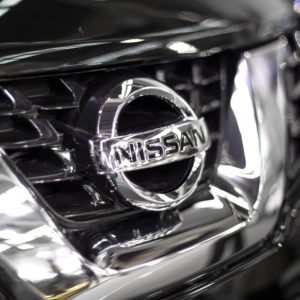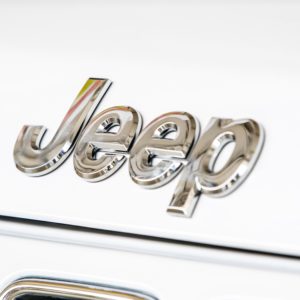A part of you is probably wondering why automakers bother camouflaging prototypes at all. It’s not as if people can’t see the vehicles. The patterns themselves are eye-catching, so it’s clear that automakers aren’t trying to make their new prototypes blend in with the environment.
So why exactly do automakers try to camouflage their test cars?
Why Do Automakers Camouflage Their Prototypes?
Unlike military camouflage, the camouflage used on prototypes and test cars has less to do with blending in and more to do with hiding the finer details of a vehicle.

Keeping prototypes under wraps is something every automobile company takes seriously because having details and designs leaked can put them at a serious disadvantage.
Camouflage prevents people from learning what the car looks like. It’s much harder to see the details of a car’s designs after the camouflage has been applied. Sometimes, the patterns also make it more difficult for cameras to focus on the vehicle because the car becomes blurry.
What is Camouflage Made Of?
Even though camouflage always serves the same purpose, automakers use different materials to make it. Some manufacturers will use plastic and foam to cover their vehicles. This makes their new models unidentifiable to the public.
Others use vinyl wrap, gaffer tape, and even cloth to disguise their vehicles. There are no set rules determining what car camouflage is made of. As long as it makes a vehicle unidentifiable, the camouflage has done its job.
How Do Automakers Camouflage Their Prototypes?
There are many ways automakers use camouflage to disguise their prototypes.
Some use hypnotic black-and-white patterns to trick cameras and cover up details and features, while others design camouflage to make one car look like another. Psychedelic swirls are another popular way to disguise a vehicle, as are patterned images to obscure a vehicle’s shape and design. Some automakers even cover the car in cloth and call it a day.
Hypnotic Black and White Patterns
One of the most common forms of camouflage automakers use on their test cars is black-and-white patterns. Not only is this particular camouflage good at fooling cameras, but it’s also hard to focus on, which makes it difficult for people to read a vehicle’s features.
This camouflage is typically made of vinyl and is wrapped around the surface of the car. It was used on a BMW 1-Series prototype.
Masquerading Cars as Other Cars
Some automakers cleverly disguise their test cars as other vehicles – even ones made by other manufacturers. This throws people off because it becomes impossible to tell what the original brand is, as well as what the real model looks like.
Some manufacturers even go as far as to modify some parts of the vehicle, such as the grille, to make it look as if it was designed by another automaker. This camouflage was used on a Bentley Flying Spur prototype, which was disguised using a Mercedes grille.
Psychedelic Swirls
Another popular pattern automakers use when camouflaging their vehicles is psychedelic swirls. Not only is the pattern satisfying to look at, but it’s dazzling and confusing enough to hide the details of a vehicle.
The body’s curvature and panelwork are cleverly hidden by swirls and spirals. This pattern was used on a Nissan Frontier prototype.
Patterned Images
One of the simplest and most effective ways to disguise a prototype is to cover the vehicle in seemingly random pictures and iconography. This includes shapes, logos, symbols, and patterns to try and hide the finer details of a specific model. This pattern was used on a Range Rover Evoque prototype.
Cloth Covers
One of the simplest ways to conceal a vehicle without compromising its performance in a test drive is to cover it with cloth.
A Chevy Silverado prototype was cleverly disguised with a cloth wrap – no swirly patterns necessary. It’s also worth mentioning that some automakers forego using cloth covers and wrap their cars in gaffer tape to obscure their features instead.
Why Send Prototypes Out in the First Place?
Although automakers must keep their vehicles a secret and hide as many details about their new models from the public eye, they must still make sure their prototypes actually work. The best way to do this is to take them out for test drives.
Driving a vehicle around a safe facility can only take a model so far. It’s better to drive a prototype in settings where they’re likely to be used by customers in the future, such as cities and highways.
Road-testing prototypes is an essential step when it comes to designing and releasing new models. There’s no real way to confirm whether or not a prototype will work unless it’s driven. The tricky part is road-testing the car and hiding it from the public at the same time.
Luckily, that’s where the camouflage comes in.
How Else Do Automakers Protect Their Prototypes?
Camouflaging their prototypes isn’t the only thing automobile companies do to prevent their latest designs from being leaked to the public.
Before hiring mechanics and other staff to work on new model types, automakers do extensive background checks on people interested in working on them. This is done to minimize the risk of spies from other companies or corrupt staff looking to leak details in exchange for money.
Automakers also protect their prototypes by having employees sign non-disclosure agreements and swearing them to secrecy. This way, they are legally forbidden from sharing details about new designs or discussing details that have not been disclosed to the public.
All in all, there are many ways automakers protect their prototypes – and camouflage is merely one of them.
Any information provided on this Website is for informational purposes only and is not intended to replace consultation with a professional mechanic. The accuracy and timeliness of the information may change from the time of publication.




















